(Jump to Day 3, 4, 5, 6, 7, 8, 9, 10, 11, Back in Browser to Return)
Days 1 & 2: En route to Devon
Following are some of the sights we stopped off at on our journey to Devon in the West Country of England:
Jane Austen's House (below) in Chawton, Hampshire, is the charming 17th-century cottage where she spent the last eight years of her life. It is now a museum dedicated to her legacy, and it’s where she wrote or revised her most famous novels, including Pride and Prejudice and Emma.

After a drive along the Sandbanks Peninsula (an affluent neighbourhood of Poole, Dorset, and outside London, amongst the UK's most expensive) and a crossing on the Shell Bay chain ferry from Sandbanks to Studland, we headed through the Dorset National Landscape to Lulworth Cove (below).

Lulworth Cove is a stunning (albeit overpriced tourist trap), horseshoe-shaped bay on England's Jurassic Coast, a UNESCO World Heritage Site known for its geological significance and famous for its rich paleontological history, specifically its abundance of fossils from the Jurassic period. Formed over thousands of years by the power of the sea, Lulworth Cove showcases dramatic rock formations and layers that reveal over 185 million years of Earth's history.

Above: The Visitor Centre at Lulworth Cove is a free, year-round hub where you can explore 150 million years of geological history through interactive displays, films, and exhibits that bring the Jurassic Coast to life.
The next stop was at the eastern end of Chesil Beach (below), a striking shingle barrier beach stretching 18 miles along England’s Jurassic Coast from West Bay in the west to Portland in the east. Chesil Beach separates the Fleet Lagoon from the sea and is renowned for its unique formation.



Driving further westwards through the Dorset National Landscape, a stop was made along the way (shown below), where it was possible to view Chesil Beach in its near-entirety from higher up and appreciate its length and uniqueness along the southern coastline of England. The barrier beach offers valuable insights into coastal processes – there is a gradual change in pebble size from smaller stones in the west to larger sized shingle in the east, due to longshore drift and wave action, and it's so consistent that fishermen once claimed they could tell their location on the beach just by the size of the stones underfoot!

From here, we continued the journey to a caravan park in Torquay, where we would be basing ourselves for 7 nights.
Torquay (shown in the photos below) is a picturesque seaside town located on the English Riviera in Devon, known for its stunning coastline, palm-lined promenades, and Victorian architecture. With its mild climate and charming harbour, it has long been a popular holiday destination. Torquay is also steeped in literary and cultural history, famously being the birthplace of crime writer Agatha Christie. In popular culture, Torquay is closely associated with the classic British sitcom Fawlty Towers. The show, created by John Cleese and Connie Booth, was inspired by a real hotel in Torquay where Cleese once stayed, and its chaotic atmosphere and eccentric owner served as the basis for the fictional Fawlty Towers hotel; the original hotel is no more, and on the site (marked with a blue plaque) today stands Sachs Lodge, a retirement housing complex built in 2017.
 |
 |
|
 |
 |
|
 |
 |
|
 |
 |
|
 |
 |
|
 |
 |
As mentioned in the previous paragraph, Torquay is located on the English Riviera, a scenic stretch of South Devon coastline. This part of south-western England is known for its mild climate, palm trees, and seaside charm. The English Riviera encompasses the borough of Torbay, which as well as Torquay includes the towns of Paignton and Brixham alongside several villages and coastal spots.

The first of two main stops of the day was in Brixham (above and below), a picturesque fishing port known for its colourful harbour and vibrant maritime history. The town remains a working fishing hub, supplying fresh seafood to markets across the country. One of Brixham's main attractions is the full-sized replica of the Golden Hind, the ship Sir Francis Drake sailed around the world in, which sits proudly in the harbour and draws thousands of visitors each year.
 |
 |
|
 |
 |
|
 |
||
Heading away from the English Riviera, and making a short stop at Greenway Quay to admire views of the River Dart, the main final stop of the day was in Dartmouth (below). [Note: for those with more time, Greenway, also known as Greenway House, is an estate on the River Dart which was once Agatha Christie's holiday home and now owned by the National Trust]. Our main stop, Dartmouth, is a maritime town nestled along the banks of the River Dart. Known for its seafaring heritage, it has a long history tied to naval activity and is home to the Britannia Royal Naval College. The town features charming narrow streets, historic buildings, art galleries, and a scenic harbour popular with sailors and tourists alike. Surrounded by beautiful countryside and close to beaches, Dartmouth offers a mix of culture, coastal beauty, and relaxed seaside atmosphere.


Day 5: Plymouth (National Marine Aquarium and Mayflower Museum)
Plymouth, UK, is a historic port city in Devon known for its maritime heritage, including the departure of the Mayflower in 1620, and its scenic coastal setting. On this visit, most of the time was spent in the National Marine Aquarium and the Mayflower Museum. Many visitors to the city may well find themselves visiting “The Hoe”, a historic waterfront park overlooking Plymouth Sound, famously associated with Sir Francis Drake, who is said to have played bowls there in 1588 as the Spanish Armada approached. The author of this webpage had already been here on a previous visit to the city and time did not permit going to see it for a second time. The city has many other sites worthy of a visit and so a good starting point is Plymouth’s official Tourist Information Centre, located on the ground floor of the Mayflower Museum (featured lower down).

Above: View of Plymouth across Sutton Harbour Marina
The National Marine Aquarium in Plymouth (below), established in 1998, is the UK’s largest public aquarium and a leading centre for ocean conservation run by the Ocean Conservation Trust. Visitors begin their journey in the Plymouth Sound zone, which showcases local marine life such as octopuses, lobsters, rays, and small sharks. The experience continues through Seagrass Shores and the Seagrass Laboratory, where the importance of coastal habitats and restoration efforts is explored. At Eddystone Reef, a recreation of the real reef south of Plymouth, visitors can observe species like conger eels and hound sharks, alongside life-size models of marine mammals. The impressive Atlantic Ocean zone features the UK’s deepest 2.5 million-litre tank, housing sand tiger sharks, rays, and jellyfish in the Ocean Drifters exhibit, complete with a replica WWII seaplane. The final area, the Blue Planet, includes the Biozone, which highlights marine biodiversity with creatures such as lionfish, giant Pacific octopus, and seahorses, as well as the vibrant Great Barrier Reef tank, home to over 70 species including turtles. Together, these seven themed zones offer visitors a rich and immersive journey through local and global marine environments.

The National Marine Aquarium in Plymouth offers a range of facilities and amenities designed to make every visit comfortable and enjoyable. The site is fully accessible, with ramps and lifts throughout the building. The Waves Café on the first floor serves a variety of hot meals, snacks, drinks, and ice cream. There is also a well-stocked gift shop on-site offering educational and eco-themed merchandise. Throughout the day, visitors can engage with educational shows, dive demonstrations, and the friendly Ocean Discovery Rangers. The aquarium also caters to groups, offering guided tours, educational workshops, and facilities for school trips and other organised visits.
 |
 |
|
 |
 |
|
 |
 |
|
 |
 |
|
 |
 |
|
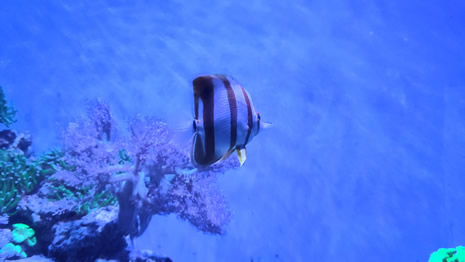 |
 |
The Mayflower Museum (below), nestled above the Tourist Information Centre on Plymouth's historic Barbican, offers a compelling journey through four centuries of shared Anglo-American history across three floors.
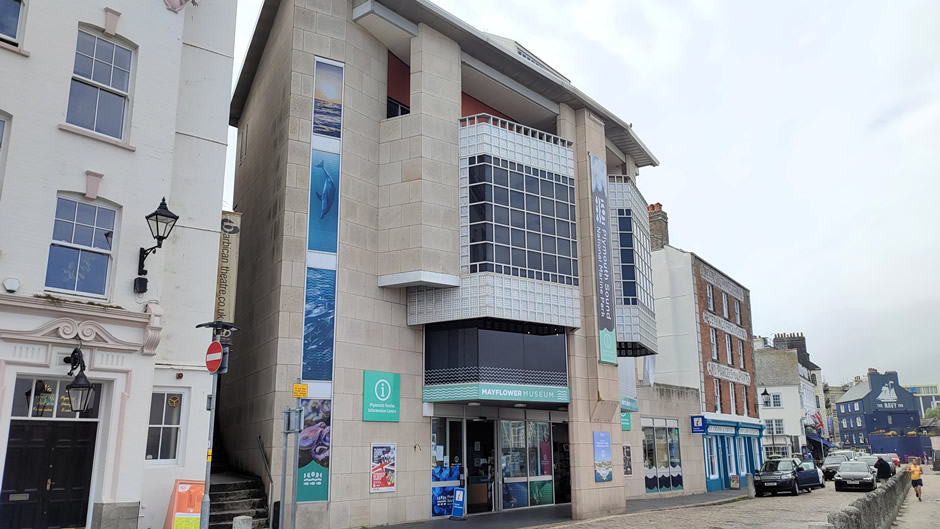
On the top floor of the museum, visitors are welcomed with panoramic views of the Barbican before moving into galleries that explore Wampanoag history and culture, early English voyages to America, and personal encounters between passengers and Indigenous communities.
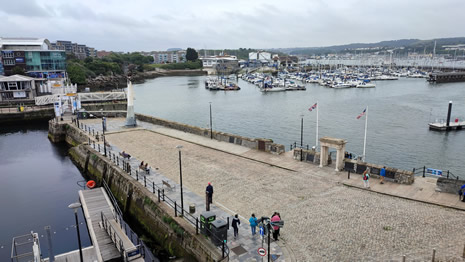 |
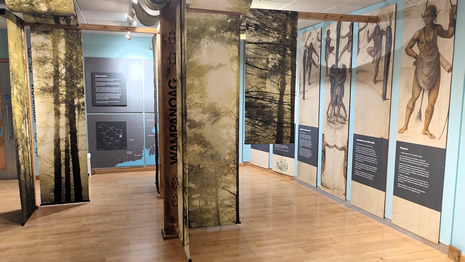 |
|
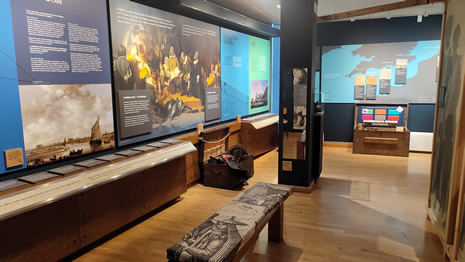 |
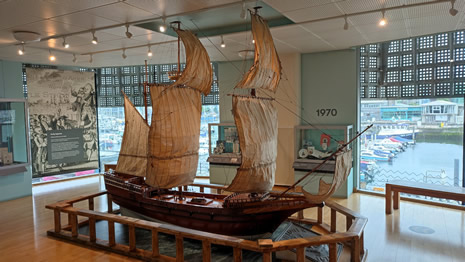 |
Above: View of the Barbican from the Mayflower Museum (upper left), and inside the Mayflower Museum – top floor (upper right photo), middle floor (lower left), and ground floor (lower right).
The middle floor is devoted to the Pilgrim experience – introducing the 102 passengers, their journey, and the profound impact of colonisation on Wampanoag land and society, with maps, timelines, and evocative historical artefacts, whilst the ground floor examines how the Mayflower story has been commemorated over time, featuring display cases, timelines of Anglo‑American relations, and models of the original and replica ships.
In front of the Mayflower Museum is The Mayflower Steps memorial (below), which marks the approximate spot where the Pilgrims departed for North America in September 1620. It features a 1934 Portland stone portico with Doric columns, a granite plaque inscribed “Mayflower 1620”, and informative bronze details commemorating the journey. Flanked by British and American flags, it serves as a poignant Grade II listed landmark and popular historical waypoint overlooking the waterfront.
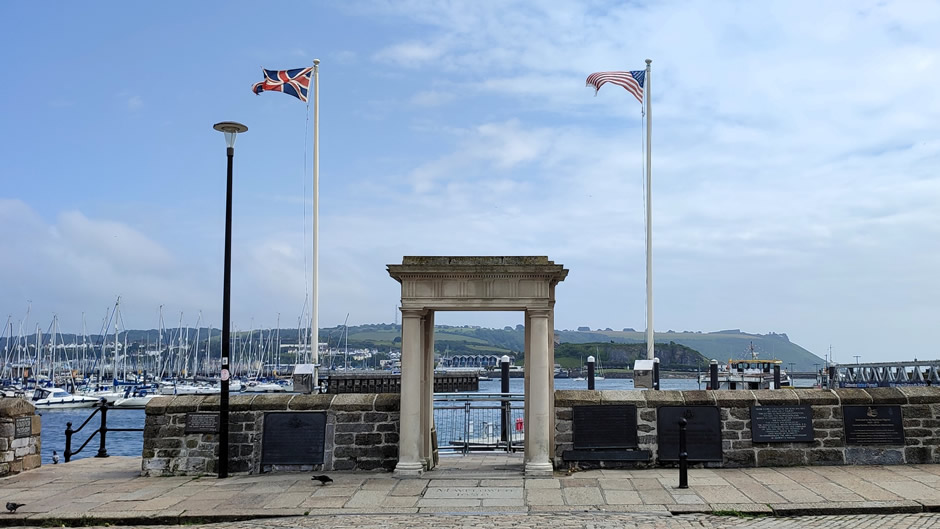
Before departing Plymouth, a quick visit was made to the Tamar viewing point (located just off the A38 on the Plymouth side). The Tamar Bridges (below), spanning the River Tamar between Devon and Cornwall, are inspiring feats of engineering that link the city of Plymouth with Saltash. The iconic Royal Albert Bridge, a railway bridge designed by the renowned engineer Isambard Kingdom Brunel, was completed in 1859 and remains a masterpiece of Victorian innovation, carrying trains across its distinctive lenticular spans. Beside it stands the Tamar Bridge, a modern suspension road bridge opened in 1961 to support growing traffic demands. Together, these two structures represent over 160 years of transport history and engineering.
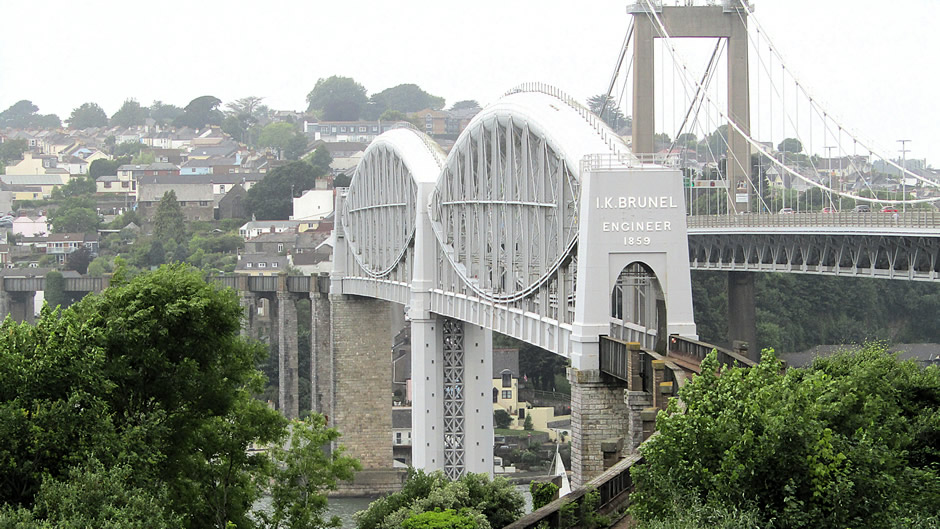
Day 6: Burgh Island and Salcombe
Two main stops today, namely Burgh Island, and the resort town of Salcombe. Perched dramatically off the South Devon coast, Burgh Island (below) is a charismatic tidal retreat best known for its glamorous 1920s Art Deco hotel and its role in Agatha Christie’s fiction.
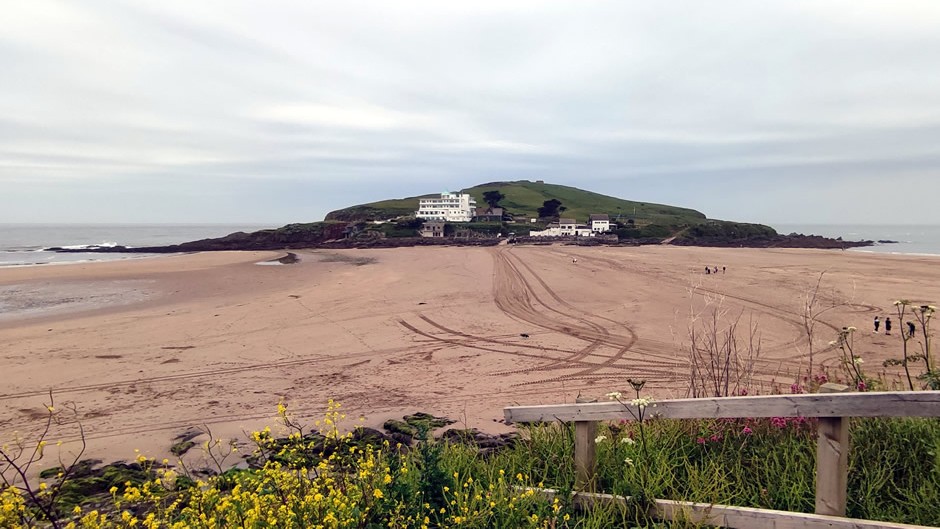
When the tide comes in and the sandy causeway disappears, the only way to reach the island is aboard the iconic sea tractor – a towering vehicle originally built in 1969, lovingly restored in May 2025, and powered by a vintage Fordson tractor engine relayed through hydraulic motors. For hotel guests, this dramatic crossing is complimentary, while non-guests can hop aboard for a modest £2 each way.
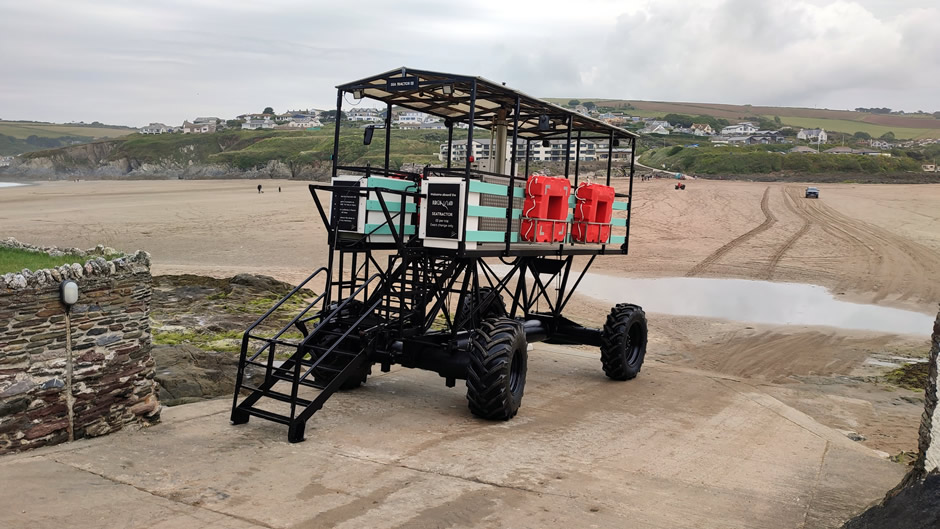
The island’s crown jewel, the Burgh Island Hotel, was built in 1929 by Archibald Nettlefold and quickly became a haven for high society – including Winston Churchill, Noël Coward, The Beatles – and perhaps most famously, Agatha Christie. The Queen of Crime wrote and set two of her classic mysteries here: And Then There Were None and Evil Under the Sun, the latter even filmed at the hotel in 2002. Today, guests can still soak up that golden‑age atmosphere in the Beach House suite – once Christie’s writing retreat, where a vintage typewriter sits ready for inspired prose.
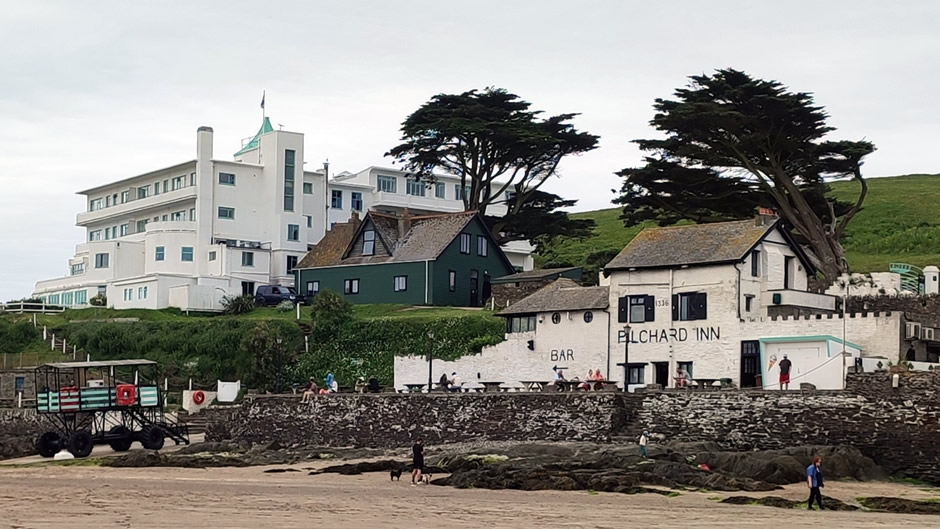
Above: The Art Deco Burgh Island Hotel (left) and The Pilchard Inn, one of the oldest pubs in England (opened in 1336).
Nestled on the banks of the picturesque Salcombe Estuary in South Devon, the charming town of Salcombe (below) is a fusion of golden sandy beaches, rolling coastal paths, and a vibrant sailing scene. Walking along narrow streets, visitors discover boutique shops and cafés offering local delights – from Salcombe Dairy ice cream to award‑winning gin, while water sports enthusiasts flock to rent kayaks, SUPs (stand-up paddle boards), or yachts for estuary and sea adventures.
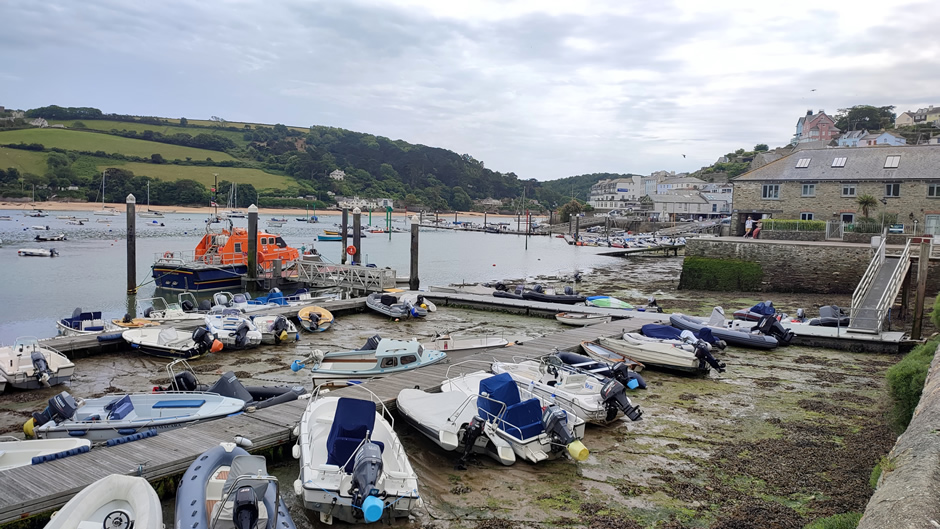 |
||
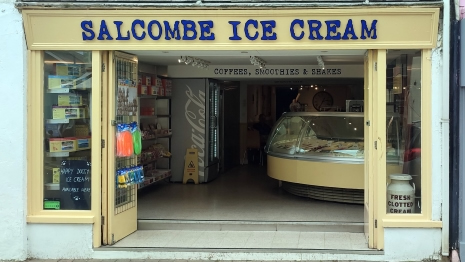 |
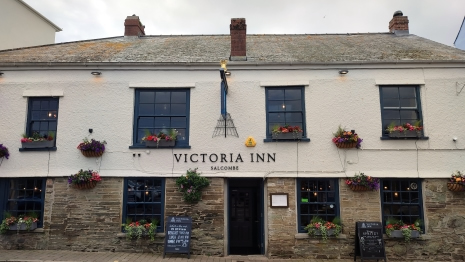 |
|
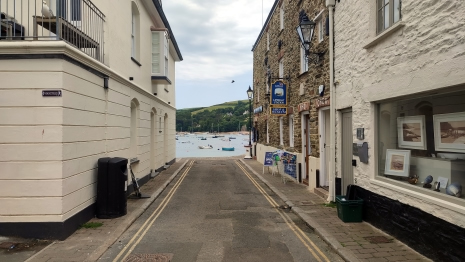 |
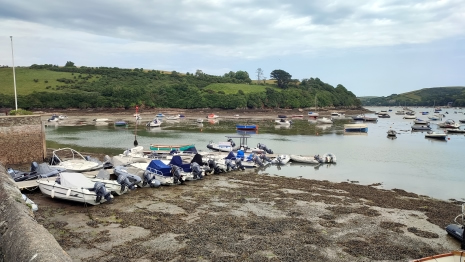 |
The South West Coast Path stretches dramatically around Bolberry Down and Bolt Head, perfect for day hikes with sweeping sea views. Historic Fort Charles stands guard on North Sands, and the town’s maritime heritage is on proud display at the RNLI station and museums – testaments to Salcombe’s seafaring past.
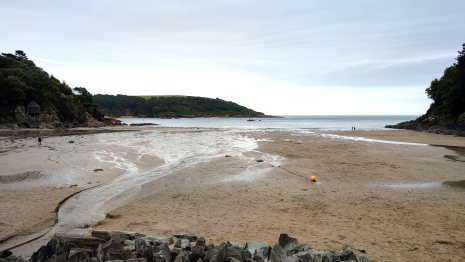 |
 |
Above: To the south of the main town are Salcombe North Sands Beach and Salcombe South Sands Beach, shown on the left and right respectively.
Over recent years, Salcombe has earned the nickname “Chelsea-on-Sea,” becoming Britain’s most expensive seaside town, with an average house price now around £1.24 million, driven by affluent buyers and second-home investors. Second-home ownership is prolific – at the time of writing, around half of homes in the area fall into that category, prompting local policies like principal‑residence restrictions on new builds and doubled council‑tax rates on second homes to safeguard community housing.
Day 7: Kent's Cavern, Torquay and Exeter Cathedral
Two sights today – one not too far from our base in Torquay, and the other slightly further afield in Exeter…
Kent's Cavern (below), located in Torquay, is one of Britain’s most important prehistoric sites and a fascinating geological wonder. Formed in Devonian limestone over 2 million years ago, the cave system features impressive stalactites and stalagmites that reveal a long history of natural formation. Archaeological excavations have uncovered evidence of prehistoric human occupation, including remains from three human species: Homo heidelbergensis, Neanderthals, and early Homo sapiens. The cavern also served as a den for Ice Age animals, and fossilized bones found there suggest that bears once made their home in the cave, sharing the space with early humans thousands of years ago.
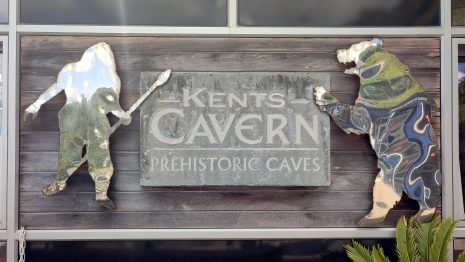 |
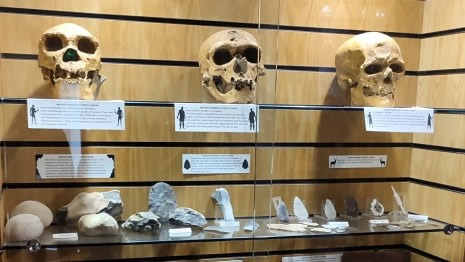 |
|
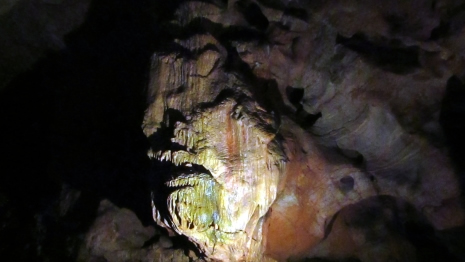 |
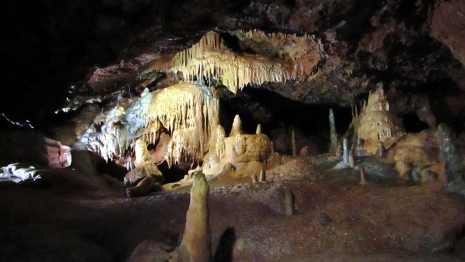 |
Further afield, Exeter is a well-known historic city in Devon known for its rich Roman heritage and vibrant cultural life. We visited here primarily to take a look at its cathedral (shown below). Officially known as the Cathedral Church of Saint Peter, it is a masterpiece of Gothic architecture that has stood at the heart of the city for over 900 years. Begun in the 12th century and largely completed by the 14th, it boasts the longest uninterrupted medieval vaulted ceiling in the world, an awe-inspiring feature that spans the entire length of the nave and choir. The cathedral’s intricate stone carvings, striking west front, and beautiful stained-glass windows make it a remarkable example of ecclesiastical design, while its tranquil interior offers a glimpse into centuries of religious devotion and craftsmanship.
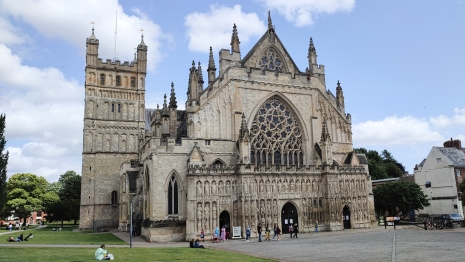 |
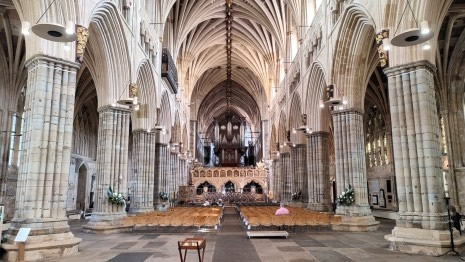 |
|
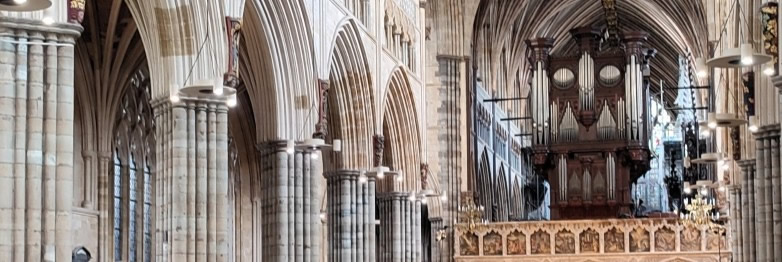 |
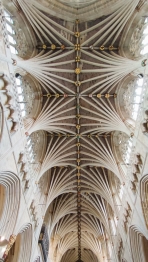 |
|
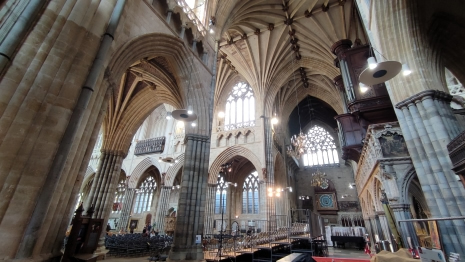 |
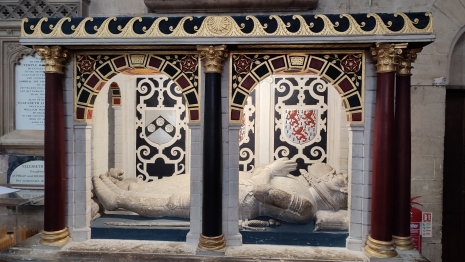 |
Day 8: Dartmoor
Dartmoor National Park, located in Devon, is a rugged moorland known for its striking granite tors, vast open landscapes, and rich archaeological heritage. Shaped by millions of years of geological activity, the area is underpinned by a granite massif that forms its dramatic terrain. Human habitation on Dartmoor dates back to prehistoric times, with numerous Bronze Age stone circles, burial mounds, and former-hut circles still visible today. The moor is also famous for its hardy Dartmoor ponies, which have roamed the land for centuries and remain a beloved symbol of the region.
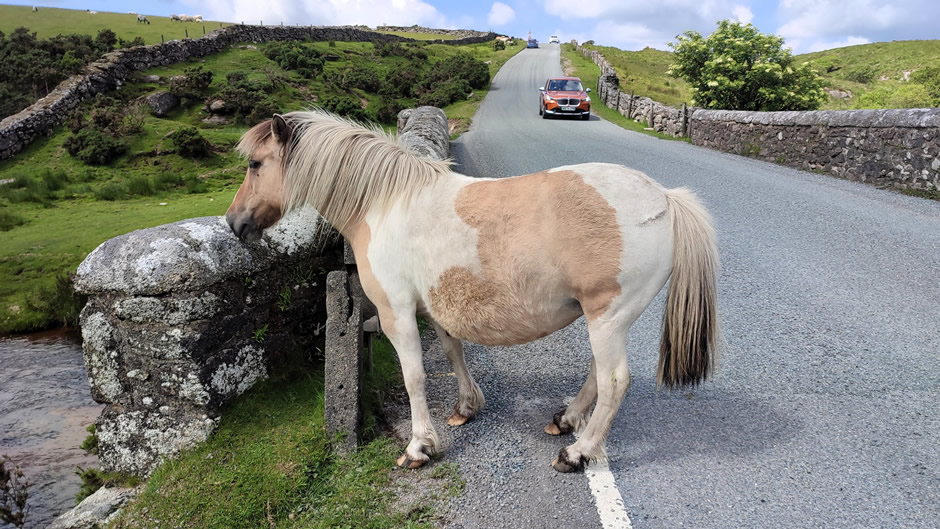
Dartmoor National Park currently operates three main visitor centres, each offering unique ways to explore the landscape, heritage, and wildlife – One located in a former hotel on Tavistock Road, Princetown (features changing exhibitions, wildlife displays, conservation garden, maps, local guides and a gift shop, serving as a hub for exploring both north and south moorland, with staff offering route planning support), one in Postbridge (showcases Bronze Age archaeology through high-tech exhibits and actual finds from Whitehorse Hill), and one situated in Haytor Vale, near Haytor Rocks and old quarries (focuses on eastern Dartmoor’s history, geology (granite tors) and local wildlife).
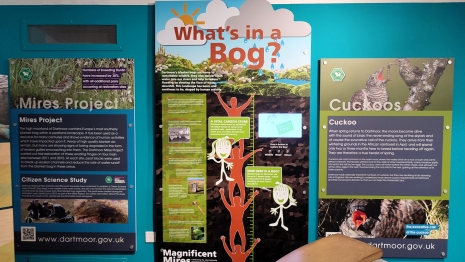 |
 |
Above: Exhibits inside the Princetown (left) and Postbridge (right) Dartmoor Visitor Centres.
Dartmoor Prison (below), located in Princetown within Dartmoor National Park, is one of the most famous, historic, and remote prisons in England. Originally built in 1806 to house French prisoners of war during the Napoleonic Wars, it later held American POWs from the War of 1812. The prison became part of the British penal system in the mid-19th century and gained a reputation for its harsh conditions, reflective of its isolated moorland setting. Though its use has evolved over time, Dartmoor Prison remains a symbol of endurance and austerity, deeply intertwined with the area's history. Note: at the time of writing, the prison has remained closed since July/August 2024, due to dangerously high levels of radon gas, a naturally occurring radioactive hazard stemming from the granite bedrock. The prison is not expected to reopen until at least 2026, while specialists carry out extensive radon mitigation and upgrades to make the site safe again. Before the full evacuation in mid-2024, HMP Dartmoor housed around 680‑700 prisoners.
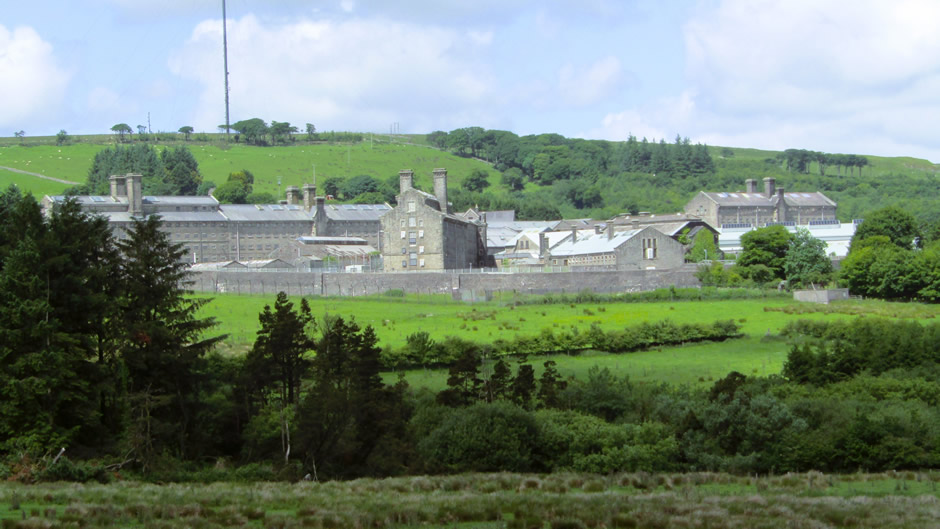
The Dartmoor Prison Museum (below), located just outside the gates of the historic prison in Princetown, offers a fascinating insight into over 200 years of penal history. Housed in a former prison dairy, the museum showcases artefacts, documents, and personal accounts that trace the prison's evolution from a Napoleonic war depot to a working Category C prison. Exhibits include early uniforms, handcuffs, escape tools, and artwork created by inmates, providing a stark and often moving look at life behind bars. The museum also explores the broader social and architectural history of Dartmoor Prison and remains a popular destination for those interested in crime, punishment, and the human stories behind the stone walls.
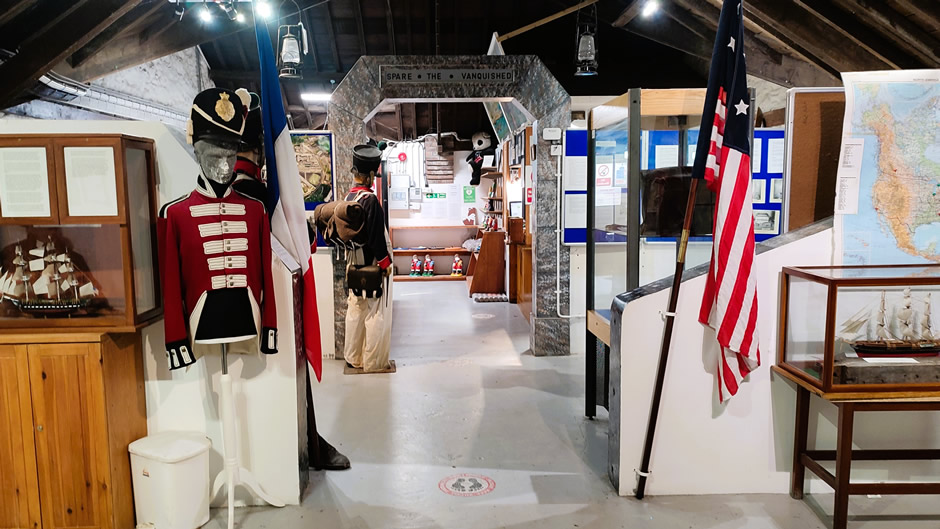
The Postbridge Clapper Bridge (below) is a historic stone bridge located in the heart of Dartmoor. Believed to date back to the 13th century, it was originally built to help packhorses cross the East Dart River. The bridge is made of massive granite slabs (called clappers) resting on stone piers, demonstrating simple yet enduring medieval engineering. Surrounded by moorland scenery, it remains a popular attraction and a symbol of Dartmoor’s rich cultural heritage.
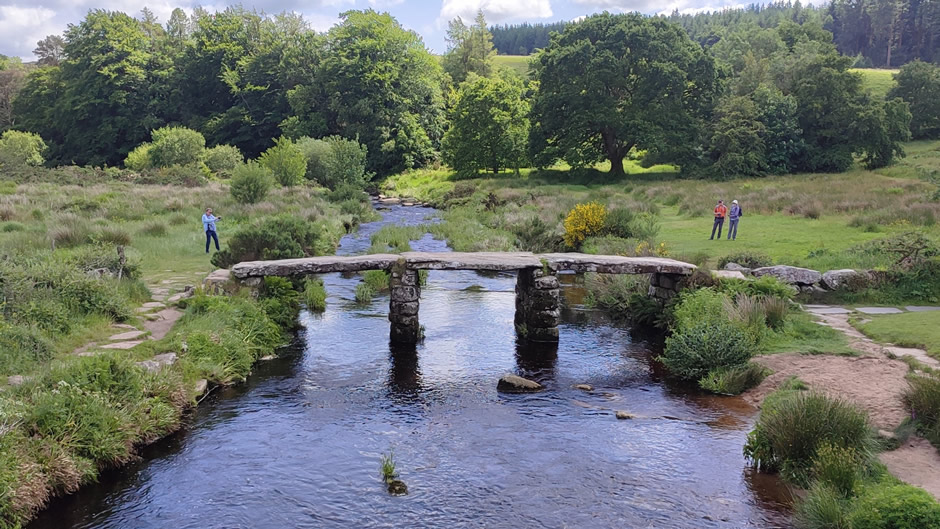
Hound Tor (below) is a striking granite outcrop located in Dartmoor, known for its dramatic rock formations and panoramic views of the surrounding moorland (a tor is a prominent outcrop of rock that can occur at any point between valley-floor and hilltop). Hound Tor is steeped in legend; it is often linked to stories that inspired Sir Arthur Conan Doyle’s The Hound of the Baskervilles. Nearby, the ruins of a medieval village add historical interest, offering a glimpse into life on the moor centuries ago. Popular with walkers and climbers, Hound Tor is both a natural wonder and a place rich in folklore and history.
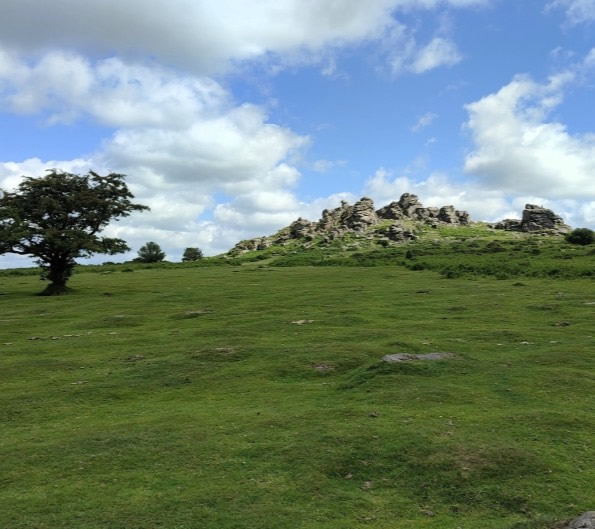 |
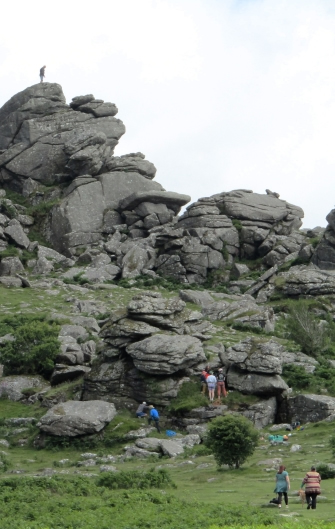 |
Above: Hound Tor, Dartmoor. The photo on the right with people in it is shown for scale.
Haytor Rocks (below), also known simply as Haytor, is one of Dartmoor’s most iconic and accessible granite tors, located in the eastern part of the national park near the town of Bovey Tracey. Rising to an elevation of 1,499 feet (457 metres), the tor is composed of coarse-grained granite and features two prominent outcrops separated by a grassy saddle. Historically, Haytor was a source of granite used in significant 19th-century construction projects, including the London Bridge (1831), with stone transported via the Haytor Granite Tramway, remnants of which can still be seen nearby. Its dramatic shape, sweeping views over South Devon, and ease of access have made it a favourite with tourists, walkers, and rock climbers alike. The tor is also part of Dartmoor's legally protected landscape and sits within a Site of Special Scientific Interest (SSSI) due to its geological significance.
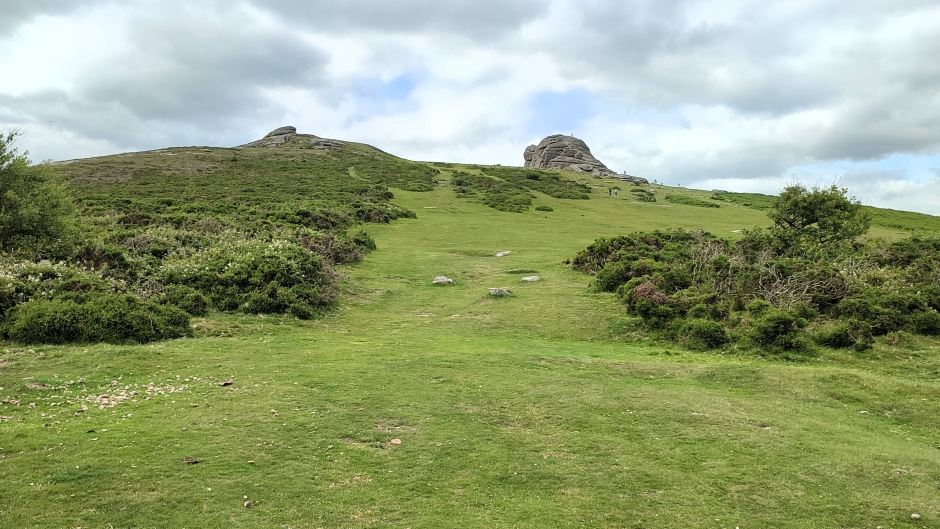
Above: Haytor – For scale, a very close look at the photo shows a person standing atop the right-hand summit, and people on the horizon to the right of the tor.
Day 9: Torquay to Newport via North Devon
Departing the accommodation in Torquay today, we took a scenic route via the North Devon coastline before heading off to Newport, where we would stay two nights before heading home. Although we were visiting relatives in Bristol the next day, with no more tolls on the bridges over the Severn River, for this particular visit staying in Newport worked out the least expensive option.
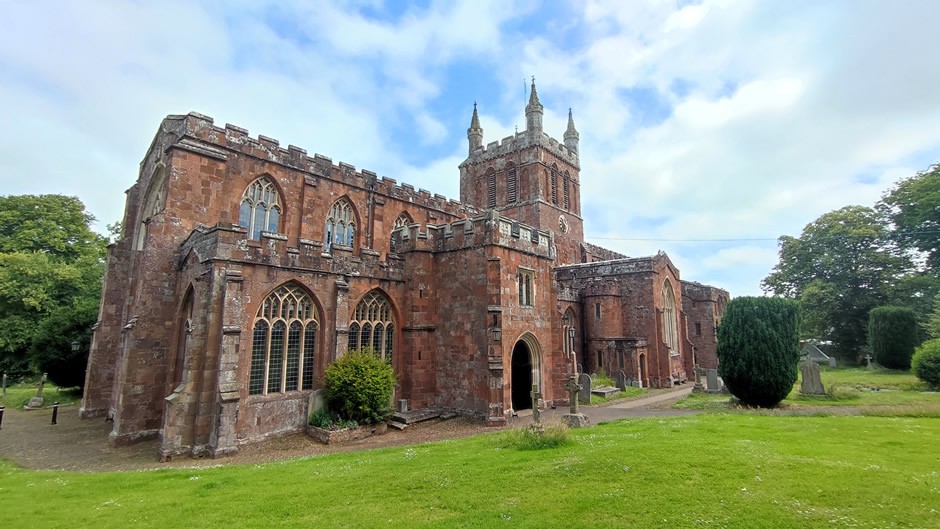
The first stop was at Crediton Parish Church (above). Formerly (and formally) known as “The Church of the Holy Cross and the Mother of Him who Hung Thereon”, it is a Grade I listed parish church built on the site of Devon’s first Saxon cathedral (c. 910–1050). A Norman collegiate church was erected in the 1130s, and the majestic Perpendicular Gothic nave and chancel we see today date from the early 15th century. Following its surrender to Henry VIII during the Dissolution, the townspeople purchased the building in 1547 for £200, and it remains under the care of a unique corporation of twelve governors. Notable interior features include memorials to figures such as Sir John de Sully (d. 1387) and General Sir Redvers Buller (1911), heraldic glass, and a revered organ. Once the focus of a Saxon bishopric, Holy Cross now serves as both a spiritual centre and a community hub, hosting regular services and cultural events while preserving over 1,100 years of ecclesiastical heritage.
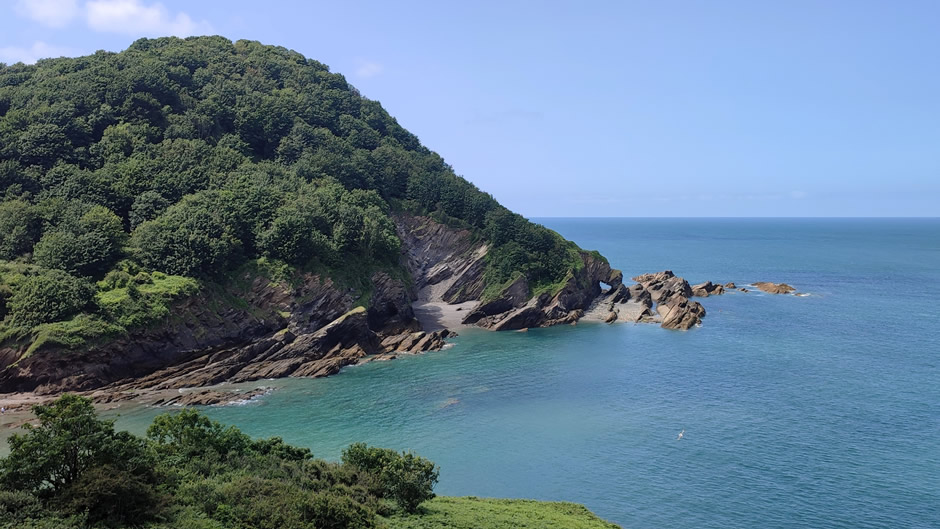
Entering North Devon District (a coastal area known for its dramatic cliffs, wild seas and sandy beaches) and after a brief convenience stop in the coastal town of Ilfracombe, a stop was made just east at Haggington Hill Car park & Picnic area to look at the views of the coastline (shown above and below). Perched just above Hele Bay in North Devon, this spot offers free parking and stunning coastal views. With space for around 15 vehicles, it's an ideal place to pause and soak in the dramatic landscape – rolling hills, wooded slopes, and sweeping vistas across the bay and out to the Bristol Channel. Unlike the inland views from Haggington Hill itself, this car park provides a front-row seat to North Devon’s rugged coastline. Although there are no facilities on-site, it’s a fantastic stop for walkers, photographers, or anyone looking to enjoy a peaceful picnic with a breathtaking sea view. The journey then continued with two further stops, one in Combe Martin and one in Lynmouth (places explored in more depth on a previous visit).
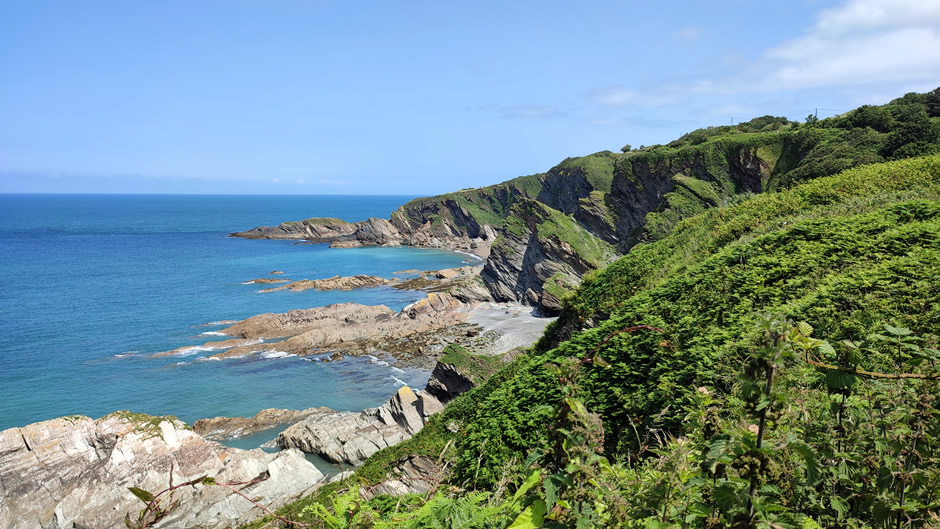
Combe Martin (below) is a charming coastal village nestled in a sheltered valley on North Devon’s dramatic coastline, right on the edge of Exmoor National Park and within a designated Area of Outstanding Natural Beauty. Its sun-kissed, pebble‑and‑sand beach is perfect for rock-pooling, swimming, and kayaking, while the iconic South West Coast Path offers breathtaking hikes, including ascents to Great and Little Hangman – among mainland Britain’s highest sea cliffs. The village is steeped in history, from its silver‑and‑lead mining remnants to quirky landmarks like the Pack o' Cards Inn, and it buzzes with local tradition, from pagan festivals to summer carnivals. Peaceful yet full of character, Combe Martin is the perfect blend of coastal adventure, historical charm, and Exmoor tranquillity.
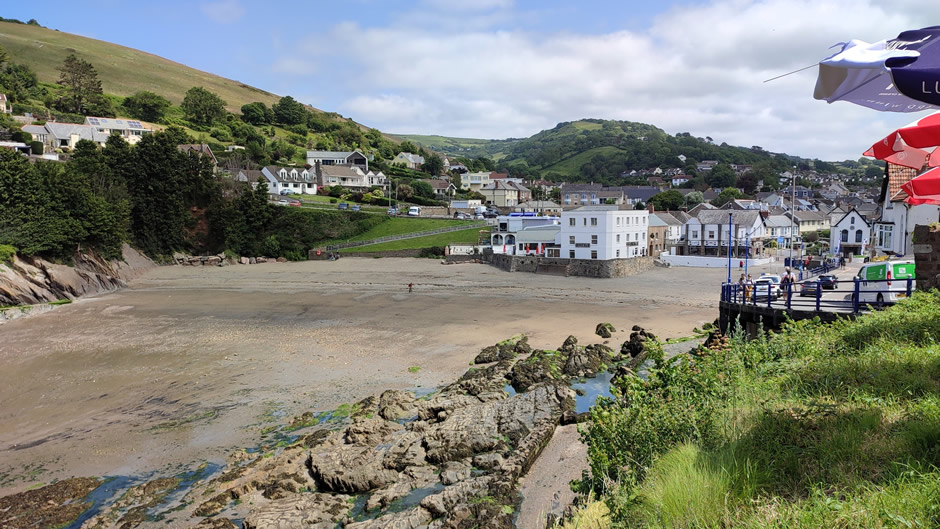
Lynmouth (below) is a quintessential North Devon gem nestled in a dramatic gorge where the East and West Lyn rivers meet the Bristol Channel, often likened to “Little Switzerland” for its Alpine-like cliffs and lush woodland. The charming harbour features pastel‑hued fishing cottages and the iconic Rhenish Tower standing watch over a peaceful shingle beach. Visitors here can glide up the cliffside on the historic water-powered funicular railway to Victorian-era Lynton – a lively village with independent shops and stunning coastal trails like the South West Coast Path and Valley of Rocks. With riverside walks to Watersmeet, quaint tearooms and a rich literary and Victorian heritage, Lynmouth offers a serene yet captivating blend of nature, history, and coastal charm.
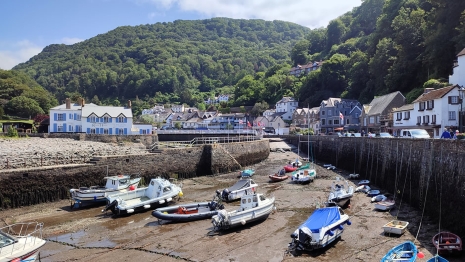 |
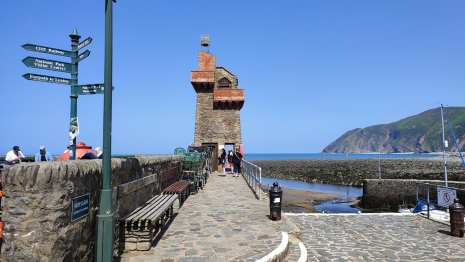 |
|
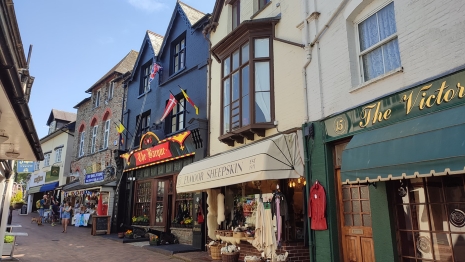 |
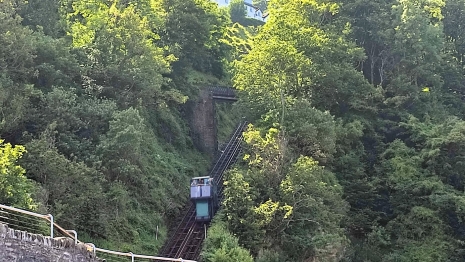 |
Visiting relatives on Spike Island in Bristol, sights seen today included the Avon Gorge and places in close proximity to their home; famed for its namesake arts centre, Spike Island is located on the city’s redeveloped harbourside. It incorporates factory buildings, warehouses, museums, and modern housing.
The Clifton Suspension Bridge (below) is an iconic landmark spanning the Avon Gorge. Designed by the famed engineer Isambard Kingdom Brunel, the bridge opened in 1864 and remains a marvel of Victorian engineering. With its elegant iron chains and striking towers, it stretches 702 feet (214m) and offers breathtaking views of the surrounding landscape. More than just a functional crossing, it has become a symbol of innovation and a beloved feature of Bristol’s skyline, attracting visitors from around the world.
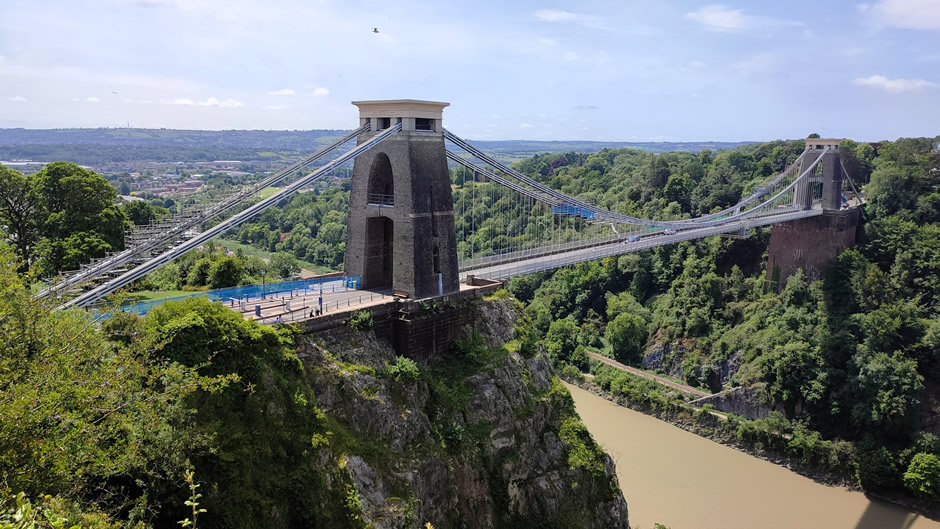
Located on Spike Island, the SS Great Britain Museum in Bristol (below) includes the restored ship itself, two adjacent museums, and the Brunel Institute. The ship here, designed by Isambard Kingdom Brunel, was the world’s first iron-hulled, screw-propelled steamship. Visitors can explore its decks, engine room, and historic cabins to experience life at sea in the 19th century. The Brunel Institute and museums celebrate Brunel’s legacy, showcasing his groundbreaking designs and contributions to engineering through interactive exhibits, rare artifacts, and archives. Together, they offer a fascinating journey into the mind of one of Britain’s greatest innovators.
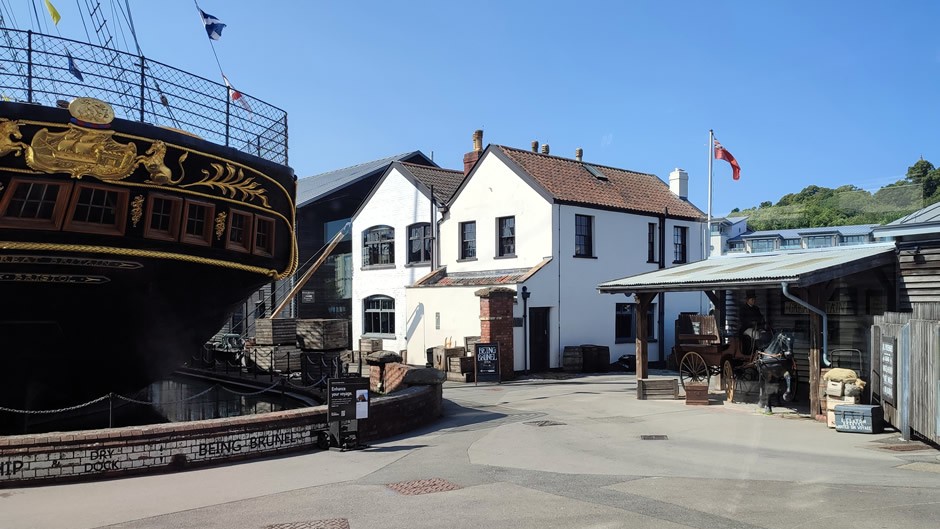
Banksy’s Girl with a Pearl Earring (below) is a clever street art parody of Vermeer’s famous painting, located on a wall on Spike Island, Bristol being the artist’s hometown. Created in 2014, Banksy’s version replaces the iconic pearl earring with a security alarm, blending classic art with modern commentary on surveillance and urban life. Like much of his work, it’s both playful and thought-provoking, merging fine art with street culture in a distinctly Banksy style. Popping up in all sorts of places, some of Banksy’s work in the Palestinian Territories can also be found on this website (link Here).

Aardman Animations, the acclaimed studio behind Wallace & Gromit, Shaun the Sheep, and Chicken Run, is also located on the island. Known for its distinctive stop-motion animation and charming storytelling, Aardman has become a beloved name in British film and television. Their studio is at the heart of Bristol’s creative community, where talented artists bring clay characters to life with humour, heart, and incredible craftsmanship. Note: This is an active studio and not open to the general public.

The warehouses on Spike Island in Bristol were originally built in the 19th century to support the city's bustling docks and maritime trade. These large, sturdy buildings stored goods such as tobacco, sugar, and other imports arriving from around the world, playing a vital role in Bristol’s industrial growth. Over time, as the docks declined, the warehouses were repurposed, and today many have been transformed into creative spaces, studios, and galleries – preserving the island’s industrial heritage while supporting its vibrant arts scene, whilst others have yet to be repurposed.
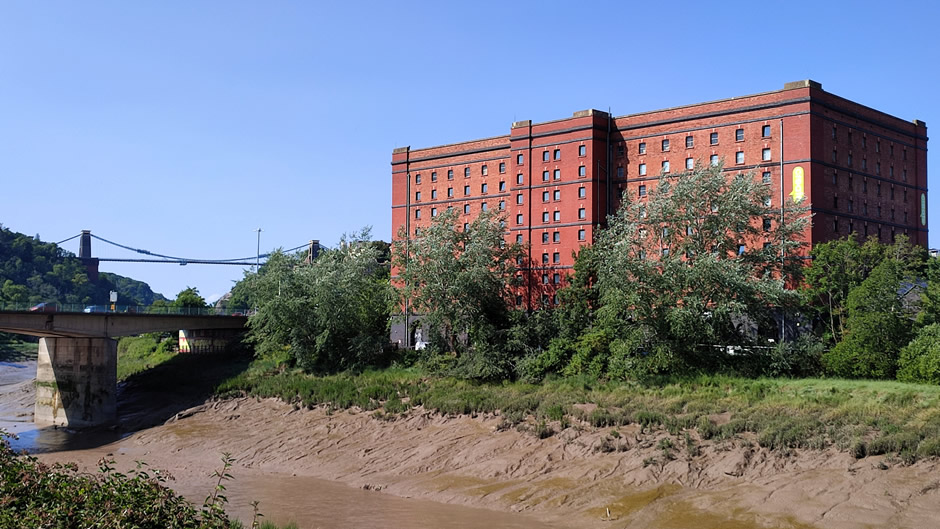
Not shown here, but worth mentioning is Bristol's M Shed, a museum on the harbourside that tells the story of the city and its people through engaging exhibits, historic vehicles, and interactive displays. Just outside, visitors can also see and ride the restored steam train that runs along the old dockside railway on Spike Island, offering a nostalgic glimpse into the area's industrial past.
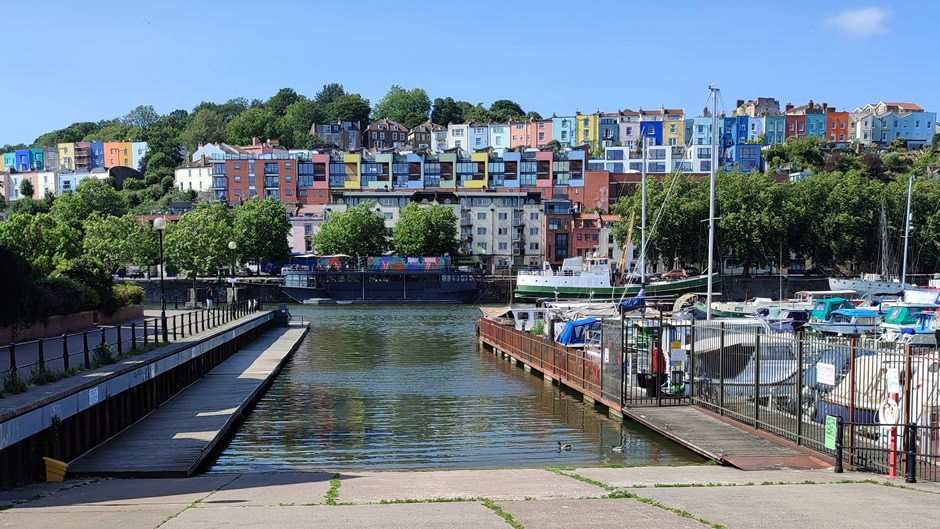
Above: View from Spike Island showing contemporary living spaces which have been coloured in an attempt to blend in with the older traditional houses.
Day 11: En route Stops on the Journey Home
Below are featured stops made before and whilst returning home from our accommodation in Newport.
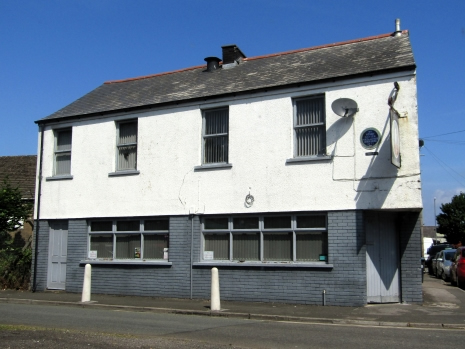 |
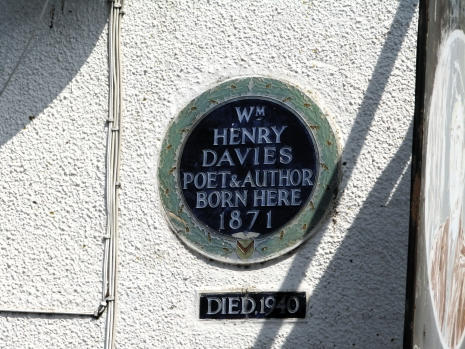 |
William Henry Davies (1871–1940), a Welsh poet and author, was born at the Church House Inn on Portland Street in Newport (shown above). Known as the "Supertramp poet", Davies spent much of his life as a wanderer in the United States and the UK. His most famous lines, "What is this life if, full of care, we have no time to stand and stare", from his poem Leisure, reflects his deep appreciation for nature and life's simple moments. In 1990, a bronze statue titled Stand and Stare (shown below) was unveiled in Commercial Street, Newport, to honour Davies on the 50th anniversary of his death. The sculpture, created by Paul Bothwell-Kincaid, features a figure entwined with the tree of life, symbolizing the poet's connection to nature and his reflective philosophy.
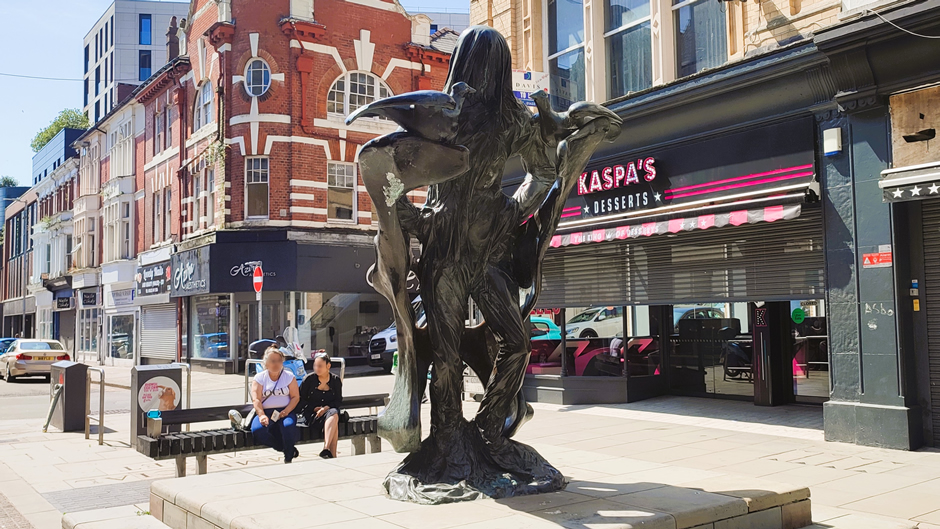
The Newport Transporter Bridge (below), completed in 1906, is a Grade I listed structure and one of only six operational transporter bridges remaining worldwide. Designed by French engineer Ferdinand Arnodin, it was built to facilitate the movement of workers between the west and east banks of the River Usk, particularly to access the Lysaght steelworks, without obstructing maritime traffic. The bridge features two 73.6-meter-high towers supporting a 196.6-meter span, with a gondola that transports vehicles and pedestrians across the river. It stands as a testament to early 20th-century engineering and industrial heritage. In 2021, the Newport Transporter Bridge received an £8.75 million grant from the National Lottery Heritage Fund for restoration and the development of a new visitor centre. This project aims to preserve the bridge's structure, enhance public access, and provide educational exhibits about its history and significance.
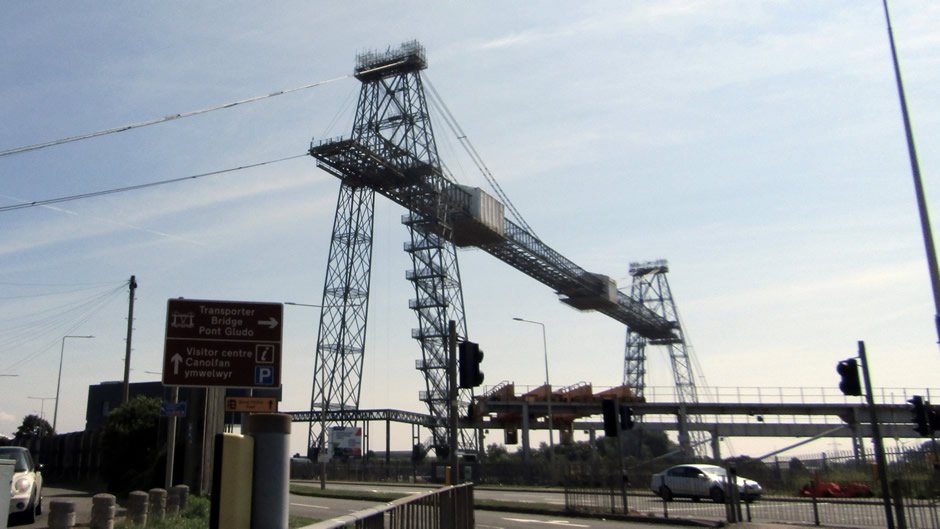
The Wye Valley (below) is a stunning Area of Outstanding Natural Beauty (AONB) straddling the border between Wales and England, following the course of the River Wye. Renowned for its dramatic limestone gorges, ancient woodlands, and picturesque villages, the valley offers a rich mix of wildlife, outdoor activities, and historic sites such as Tintern Abbey. It’s a favourite destination for walkers, kayakers, and nature lovers seeking serene landscapes and a glimpse into the region’s cultural heritage.
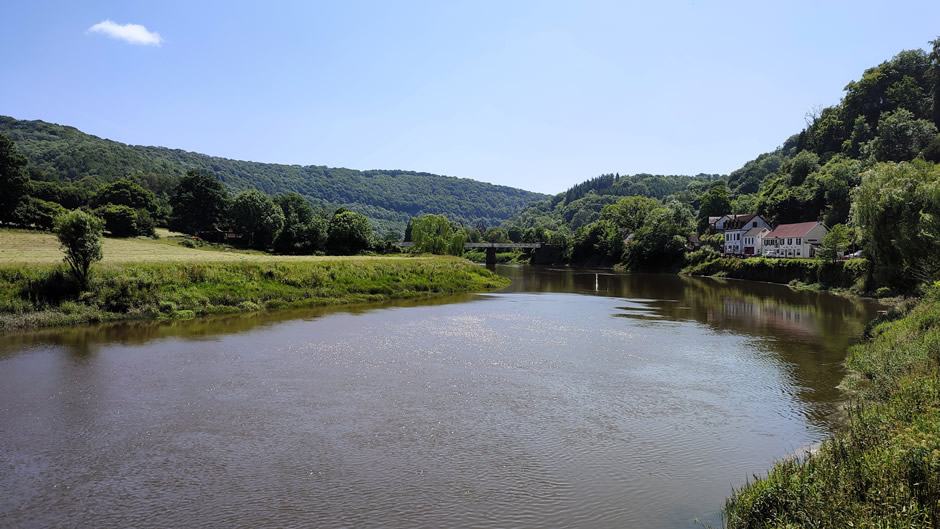
Puzzlewood (below) is an enchanting 14-acre ancient woodland located near Coleford in Gloucestershire's Forest of Dean. Characterized by its moss-covered rocks, twisted trees, and labyrinth pathways, it offers a surreal, otherworldly atmosphere. The site features over a mile of winding trails, wooden bridges, and hidden caves, making it a favourite for photographers, nature enthusiasts, and families alike. Puzzlewood has also served as a filming location for several major productions, including Star Wars: The Force Awakens, Doctor Who, and Merlin, and is believed to have inspired J.R.R. Tolkien's depiction of Middle-earth. Visitors can enjoy interactive experiences like the Wizard’s Guide and Roman coin treasure hunts, and explore the on-site farm animals and café.
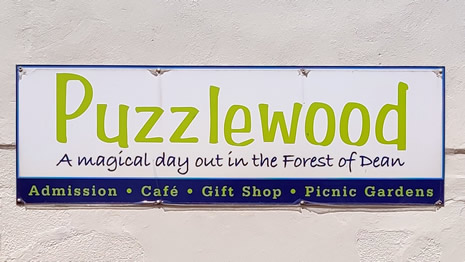 |
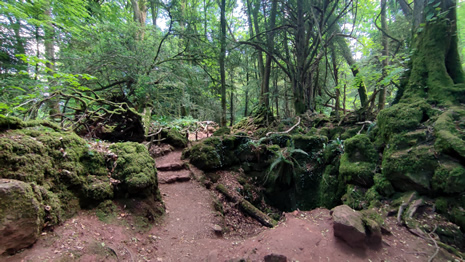 |
|
 |
 |
|
 |
 |
More a “stop to look at the sign” rather than an actual place to visit on this trip, Rockfield Studios (below), is nestled in the tranquil Monmouthshire countryside. It is renowned as the world's first residential recording studio. Established in 1965 by brothers Kingsley and Charles Ward, the studio transformed their family farm into a haven for musicians seeking inspiration away from urban distractions. Over the decades, Rockfield has hosted an impressive roster of artists, including Queen, who recorded the iconic Bohemian Rhapsody here in 1975, as well as Oasis, Coldplay, Black Sabbath, and The Stone Roses. The studio's unique blend of rustic charm and professional facilities continues to attract musicians from around the globe. Today, Rockfield Studios not only serves as a recording venue but also offers holiday accommodations, allowing visitors to experience the creative atmosphere that has inspired countless hits. Note: Rockfield Studios is a working recording studio and a private property which the general public cannot simply wander into. Guided tours are available, but they must be booked in advance.
 |
 |
Finally, Symonds Yat Rock is a breathtaking limestone outcrop in the Wye Valley, rising about 500 feet above a dramatic bend in the River Wye, offering exceptional panoramic views (shown below). It stands on the site of an Iron Age hillfort (now a scheduled ancient monument), inviting both history enthusiasts and nature lovers to explore its trails, spot peregrine falcons and other raptors, and enjoy a cozy break in the charming log-cabin café.


Back to Top